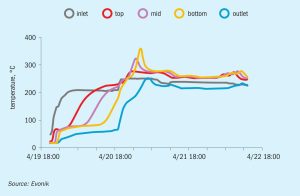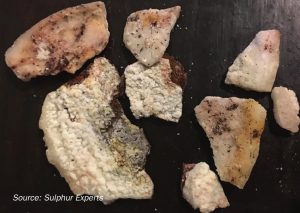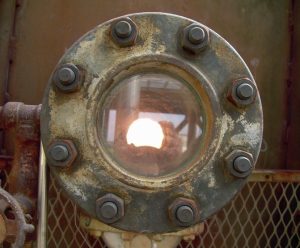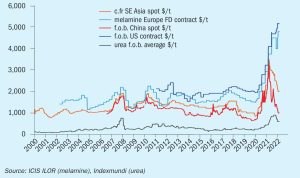
Reaping the rewards of recycling
Evonik explores the development of catalyst reuse and how recycled hydroprocessing catalysts can be successfully applied in tail gas treating units to deliver cost and performance gains.

Evonik explores the development of catalyst reuse and how recycled hydroprocessing catalysts can be successfully applied in tail gas treating units to deliver cost and performance gains.

Incorporating sulphur into polymers is known to improve their properties. New research is looking into the varied world of sulphur co-polymers, unlocking new materials for batteries, structural applications and clean technology.

Sulphur Experts Inc. combines new learnings, historical data, and recent onsite experience from operating companies to show what factors really impact ammonia plugging risk and what can be done to control them in order to allow for a wider operating range for SWS processing in the refinery SRU.

Advances in technology, equipment and reagents are enhancing phosphate fertilizer production. Optimisation of standard equipment is also vital for ensuring process efficiency.

NORAM has recently introduced a patented acid entrainment mitigation device (EMD) to deal with acid mist carryover from sulphuric acid towers.

Operating plants in extreme environments can present unique challenges. If these challenges are not anticipated and addressed in design and commissioning, the plant will not be able to start up nor meet its specification. This article examines the challenges faced in commissioning amine plants operating in three diverse environments (extreme heat, extreme cold, and offshore) and the technical and procedural solutions employed to resolve them. Mike Sheilan, Ben Spooner, Kaiyr Tekebayev, and Philip le Grange , Amine Experts.

Enhancing the reliability of sulphur plant starts in the thermal stage. Matt Coady and Martin McCallister of Delta Controls report on a recently developed and launched insertable process camera that monitors the vessel interior of online Claus thermal reactors, providing valuable process data which will allow plants to make better informed operation decisions.
Casale has developed a range of methanol-ammonia coproduction processes to match different requirements according to product capacity.

The latest improvements to melamine process technology now make it even easier to integrate a melamine plant with an ammonia and urea fertilizer complex. Guido Canti of Eurotecnica and Marc Wieschalla of thyssenkrupp Uhde discuss the benefits of plant integration.

Optimisation of the nitric acid process depends on good process visualisation tailored to the specific process parameters of the plant, improvements in combustion efficiency, reduction of N2 O emissions and the optimal use of platinum group metals.